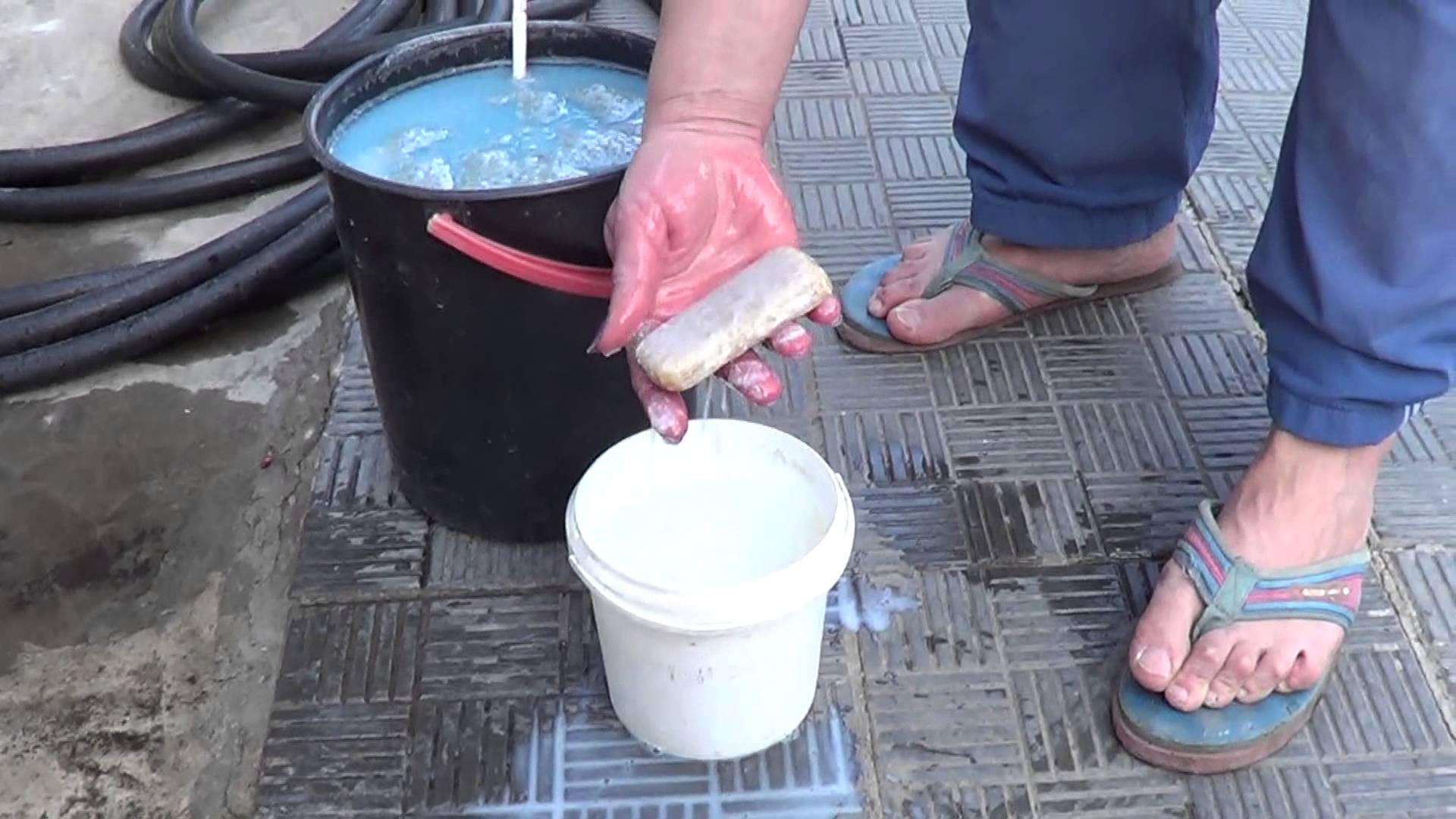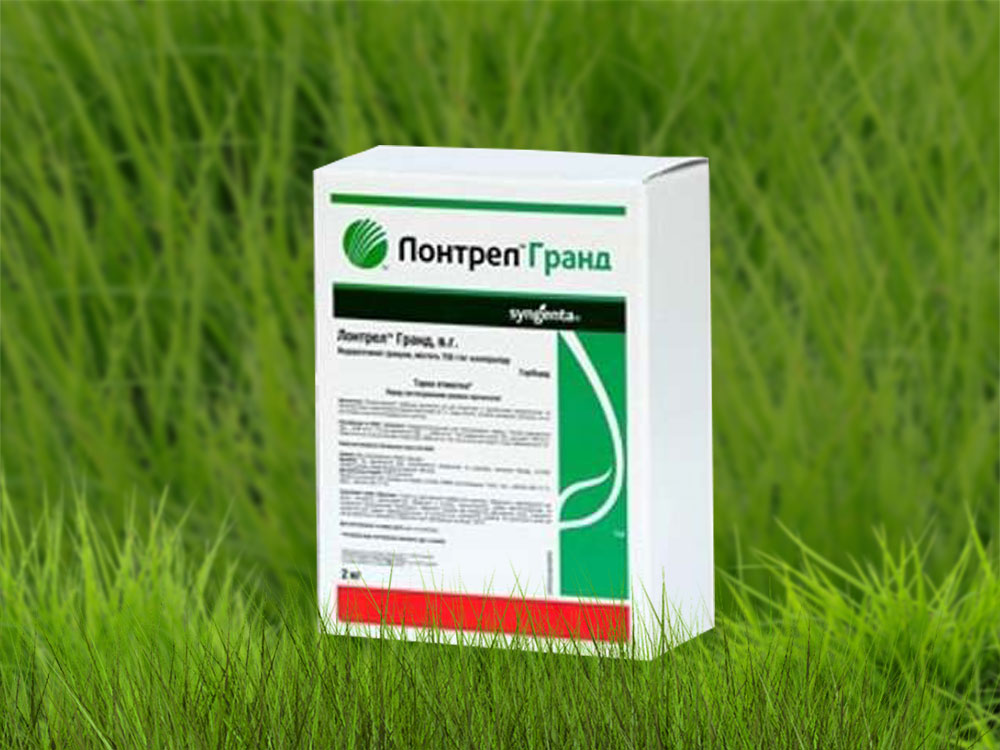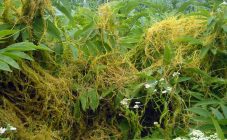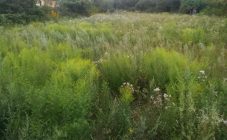Content:
A bright and well-groomed lawn will adorn any garden area. It is important to control the amount of weeds to keep the lawn presentable, and the grass on it bright green and dense.
If there is a lot of weed vegetation, the heterogeneity of the lawn becomes visible from afar: tall or flowering weeds can spoil the appearance of the site. Weeds grow and develop faster than lawn grasses, creating competition for soil nutrients, moisture and sunlight. As a result, the lawn grass becomes stunted, turns yellow, dies off and leaves behind bare or weedy bald spots. That is why it is important to promptly clear the green lawn of such competing plants. The question of how to get rid of weeds on the lawn arises already in the first summer after its sowing.
How to control weeds
What to do if the lawn is overgrown with weeds? There are a huge number of types and types of unwanted "guests" on the lawn, but even the most difficult of them can be fought against.
Dandelion control methods
Dandelion is one of the most common weeds on lawns. It is most often found on new lawns with sparse young grass. Weed seeds fall with the wind, then some of them germinate, and the other part remains in the soil and germinates later.
How to get rid of dandelions on your lawn? To avoid yellow heads that spoil the look of the lawn, you have to carry out several treatments of the lawn. This situation is absolutely normal, you do not need to be afraid of a huge amount of dandelion, but you need to carefully care for the lawn for a couple of years. When the grass becomes thicker, it will be much more difficult for the weed seeds to reach and settle in the ground.
Plantain control methods
Plantain most often appears on sites where there is stagnant water or increased soil compaction, which occurs as a result of trampling. You can control this weed mechanically or chemically.
Methods:
- With a small number of plantains, it makes sense to try to weed them by hand: these plants have a short, thick root that can be easily dug out with a root remover.
- Of the chemicals, it is recommended to use herbicides of local action - they effectively fight weeds belonging to the dicotyledonous family. There is no 100% guarantee that all plantain will be removed from the lawn, but its amount will be significantly reduced. To do this, a solution of a selective herbicide is poured into a sprayer and sprayed over the entire surface of the lawn.
The choice of method depends on the amount of weeds and the size of the lawn.
How to deal with wheatgrass
Wheatgrass is the most difficult to remove lawn weed. It makes no sense to treat the lawn with special herbicides, since by its type, wheatgrass is very close to lawn grasses, and local chemicals simply do not recognize it.Therefore, in the fight against this weed vegetation, the mechanical method is most often used - manual weeding. At the same time, they try to remove the wheatgrass along with the young and old roots, without leaving them in the ground. This technique is rational only on condition that the weed has captured a small area on the lawn.
If the weed has spread over a large enough area, you can try to remove it chemically. In this case, the working solution of the herbicide is applied locally to each weed plant using a brush. The main thing is not to get a chemical agent on the lawn greens during the operation. It is recommended to choose a sunny, windless day for processing.
Lawn weeding as a weed control method
Weeding your lawn by hand, provided it is done carefully, is the most effective way to control weeds. One-year-old weeds can be mowed with a lawnmower or manually picked before the flowers appear, as they are propagated by seeds. Basically, cyclical mowing is used against one-year-olds: the first mowing will not kill them, but only weaken them, but the next few will finish them off completely. The frequency of lawn mowing depends on the growth rate of the grass. It can be carried out only when the grass reaches a height of 7-10 cm.
To weed the lawn on which weeds of a low-growing type grow, the grass is combed with a special metal fan rake. Such plants include blackhead, bindweed, filamentous veronica, matrix, etc. The same tool is used to collect garbage from a green area, for example, felt (dried stalks and leaves of grass that reduce the quality of the lawn). Another benefit of periodically combing the grass with a fan rake is to stimulate tillering.
The main type of manual weeding is considered to remove weeds from the lawn one by one using simple tools: root removers and weed extractors:
- The first is a small narrow blade with a special curved bayonet shape, covering the root of the plant extracted from the ground from all sides. The technology for using the root remover is very simple - just drive it into the ground near the weed root, loosen it a little and pull the plant out completely. In this case, after removing it, a small hole in diameter remains.
- The weed extractor is convenient in that when working on the site, you do not need to crouch or bend over - you can weed the lawn while standing, since the length of the tool is 1.1 m.In this case, you need to pierce the weed in the center with the lower tip of the device, turn the upper handle of the extractor to 1800 and pull out the plant along with the root.
When weeding by hand, it is very important to remove the entire weed root system. This harmful vegetation is very tenacious and is able to grow back even from the smallest root area left in the ground.
The frequency of manual weeding depends on how dirty the lawn is: the more often and better this operation is carried out, the less unwanted plants grow on it. The age of the lawn also affects the frequency of weeding: more young weeds are produced than well-tended old ones.
Particular attention should be paid to weeding the lawn in the fall and, starting in late August, try to remove all visible weeds. This technique will not allow many weeds to overwinter and germinate again.The last haircut is carried out two weeks before frost - the grass, whose height is about 7 cm, tolerates winter well and has time to recuperate after mowing.
Weed Control Products
There are several popular recipes for weeds on the lawn without the use of chemicals. Individual specimens can be gently treated with regular vinegar. But a more effective remedy is considered to be its mixture with salt and laundry soap, taken in equal proportions. People call it herbicidal soap.
To remove perennial weeds with a powerful root system, special chemicals called herbicides are most often used. They are conventionally divided according to the principle of action into two groups: local (selective) and continuous. The former are sprayed over the entire surface of the lawn, as they distinguish many perennial weeds from green grass, while the latter can be used by brushing on particularly large and difficult to remove weeds. The most popular lawn herbicides are discussed below.
Lontrel 300
This local herbicide has gained wide popularity among other similar agents for several reasons:
- The weather conditions for treating the lawn with Lontrel 300 are unimportant; absolutely any convenient day can be chosen for spraying.
- The date of the last mowing of the grass is also insignificant - the preparation can be applied even on the day of lawn cultivation.
- The product is non-resistant and non-phytotoxic.
The principle of action of Lontrell 300 is based on its entry into weed tissues and blocking photosynthesis and access to nutrition for the root system. Available in liquid form.
Lapis lazuli
This selective lawn weed control not only destroys annual dicotyledonous and cereal weeds, but also protects the lawn from germination of new unwanted plants for another 1 month (depending on weather conditions, this period may be longer). Available in powder form. The disadvantage of Lazurite is its relatively high price.
Hacker WRG
Another effective local preparation that kills perennial lawn weeds: chamomile, thistle, dandelion, thistle, etc. It is a granule that easily dissolves in water.
Lintour
Selective herbicide, shows high efficiency in the destruction of particularly difficult to remove plants of the dicotyledonous family. The exception is white clover, against which this drug is not used. The principle of action is based on the introduction of the drug into the metabolism of a weed plant, protein synthesis stops, and it dies without changing its green color.
Continuous herbicides
These include Agrokiller, Roundup, etc. On an already growing lawn, they are used with caution, applied only to weeds, without getting on the grass. Even a small amount of these chemicals will kill the plant. They are often used to pickle the ground before sowing the lawn.
What is chemical lawn weeding
Chemical weeding of a lawn is the use of selective herbicides and spraying its surface with a special aqueous solution. This operation can be a real salvation from stubborn weeds, significantly extend the life of the lawn, and give it and the garden as a whole an attractive appearance.
Below is a general step-by-step instruction on the use of herbicides for lawns in summer cottages:
- Before starting work, you need to prepare the sprayer, gloves, respirator and work clothes.
- The working solution must be prepared immediately before the treatment of the lawn, as it cannot be stored.To do this, in accordance with the recommendations on the packaging, the drug is diluted in the required amount of water, after which the resulting mixture is poured into a sprayer. During the preparation and use of the solution, do not smoke and eat food.
- To increase the efficiency of the solution, nitrogen-containing fertilizers are added to it. Many weeds, such as clover, grow in nitrogen-poor soils. To create unfavorable conditions for them, ammonium nitrate is added to the herbicide.
- Spray the solution of the preparation evenly over the entire surface of the lawn.
It is recommended to carry out chemical weeding of the lawn in the morning or evening hours, when there is no active sun. Otherwise, green grass can get sunburn. In order for spraying to be effective, a dry, windless day is chosen for treatment.
Getting rid of weeds from the lawn is laborious, but necessary. Lawns in a neglected state will not last long: the lawn grass under the pressure of weeds will eventually be forced out. The most appropriate method for removing unwanted plants depends on the number of plants, the size of the lawn and the preference of the grower.















